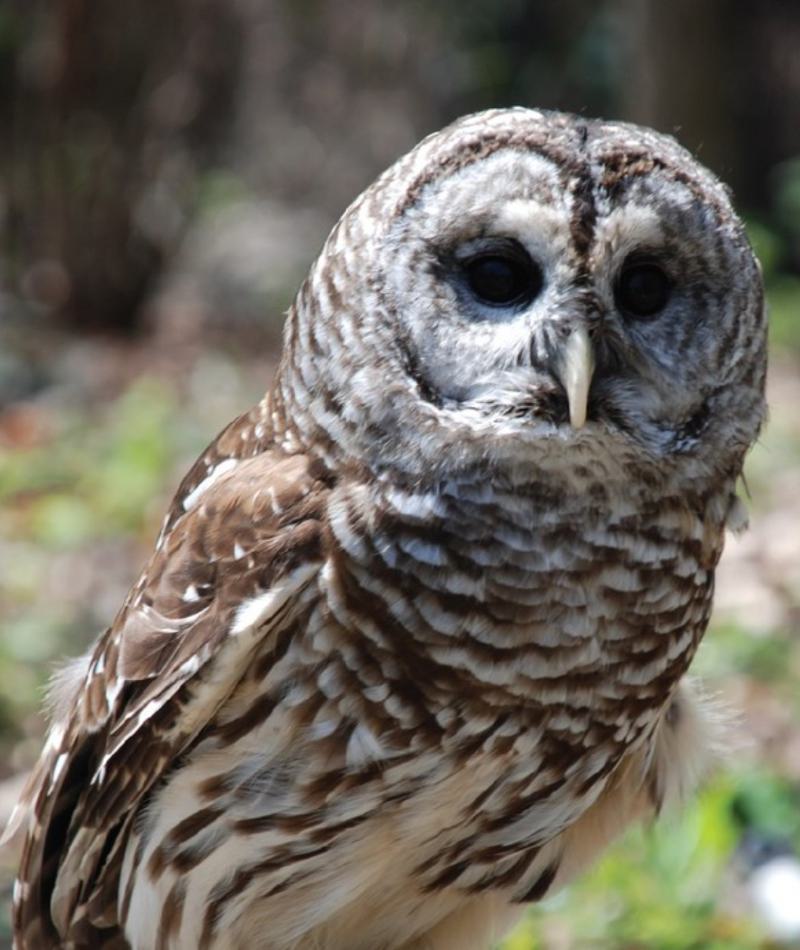
Barred Owl
Strix varia
Did you know?
- Barred owls are primarily active at night.
- They mostly eat small mammals, including mice, rabbits and squirrels.
- Courtship involves raising wings, bobbing and bowing heads, and calling to each other.
- Females usually lay two or three eggs.
- Offspring usually start flying at 6 weeks old.
Happy Homebodies
Barred owls do not migrate or even travel far at all! They tend to stay close to their home territories. During incubation, the female will lay on the eggs and the male will bring food to his mate.
Who Cooks for You?
The call of this owl sounds like: "Who cooks for you, who cooks for you all?" Listen carefully in a forest at night and you may be lucky enough to hear one.
Threat Level
- Unknown
- Common
- Near Threatened
- Threatened
- Endangered
- Critically Endangered
- Extinct in the Wild
Common
The Barred Owl is widespread and abundant.
Range
North America
Habitat
Forests, woodlands

We care about Barred Owls
The Saint Louis Zoo supports barred owls at the Zoo. Learn more about how we are helping wildlife around the world.
Find this animal in Historic Hill

SAINT LOUIS ZOO ZONE
Historic Hill
Historic Hill is a lovely stroll through one of the oldest parts of the Saint Louis Zoo. From the 1904 World’s Fair Flight Cage to the Spanish architectural flavor of the 1920s in the Bird House, Primate House and Herpetarium to the finishing touches of our thoroughly modern exhibits, this area of the Zoo has a unique ambiance and a nostalgic history that make it a great destination.

